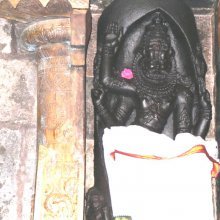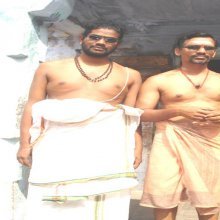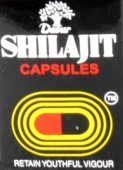Tear: 2 definitions
Introduction:
Tear means something in Hinduism, Sanskrit, the history of ancient India. If you want to know the exact meaning, history, etymology or English translation of this term then check out the descriptions on this page. Add your comment or reference to a book if you want to contribute to this summary article.
Images (photo gallery)
In Hinduism
Natyashastra (theatrics and dramaturgy)
Source: Shodhganga: Elements of Art and Architecture in the Trtiyakhanda of the Visnudharmottarapurana (natya)The flowing of Tears refers to one of the various expressions (or emotions, feelings, etc.) in Sanskrit drama that are conveyed through Sātvikābhinaya, which represents one of the four divisions of Abhinaya or “ways to convey or represent one’s emotion to others” (in Sanskrit Drama), according to the Viṣṇudharmottarapurāṇa, an ancient Sanskrit text which (being encyclopedic in nature) deals with a variety of cultural topics such as arts, architecture, music, grammar and astronomy.—Sātvikābhinaya that deals with the feelings, emotions and expressions, conveyed by the actors. Flow of tears, horripilation, sweating, throbbing of heart and faultering speech come under the sātvikābhinaya. It is important to note here that in the Nāṭyaśāstra the word bhāvabyañjaka is used for the sātvikābhinaya. When the inner ideas of a dramatist are expressed by means of words, gestures, facial expressions and the representation of sattva, those are called bhāvas. [...]

Natyashastra (नाट्यशास्त्र, nāṭyaśāstra) refers to both the ancient Indian tradition (shastra) of performing arts, (natya—theatrics, drama, dance, music), as well as the name of a Sanskrit work dealing with these subjects. It also teaches the rules for composing Dramatic plays (nataka), construction and performance of Theater, and Poetic works (kavya).
India history and geography
Source: Singhi Jain Series: Ratnaprabha-suri’s Kuvalayamala-katha (history)Tears (flowing from eyes) (due to the death of one’s lover) represents a scene of human life commonly depicted on the Saṃsāracakra paintings, in ancient India, as mentioned in the Kathās (narrative poems) such as Uddyotanasūri in his 8th-century Kuvalayamālā (a Prakrit Campū, similar to Kāvya poetry).—Page 185.21 f.: Here follows a description of a printed scroll illustrating the Jaina conception of saṃsāracakra. [...] The saṃsāra-cakra illustrated the three worlds of hell, human world and the world of gods. [For example:] The devoted wife crying and weeping for her departed lover, the old father sitting nearby with tears flowing from eyes and his mother becoming unconscious in a swoon.

The history of India traces the identification of countries, villages, towns and other regions of India, as well as mythology, zoology, royal dynasties, rulers, tribes, local festivities and traditions and regional languages. Ancient India enjoyed religious freedom and encourages the path of Dharma, a concept common to Buddhism, Hinduism, and Jainism.
See also (Relevant definitions)
Starts with: Tearing, Tears of blood.
Full-text (+1182): Bashpa, Ashru, Rodana, Premashru, Ashrupata, Asum, Asra, Nayanajala, Bashpakantha, Dharashru, Paryashru, Vilocanambu, Jatashru, Harshashru, Antarbashpa, Sashru, Anandashru, Lota, Nayanodabindu, Udbashpa.
Relevant text
Search found 270 books and stories containing Tear; (plurals include: Tears). You can also click to the full overview containing English textual excerpts. Below are direct links for the most relevant articles:
Vinaya Pitaka (2): Bhikkhuni-vibhanga (the analysis of Nun’ rules) (by I. B. Horner)
Tears < [July – September, 1982]
Rama in Quest of Sita < [July – September, 2000]
The Goddess of Peace < [March-April, 1929]
Vinaya Pitaka (1): Bhikkhu-vibhanga (the analysis of Monks’ rules) (by I. B. Horner)
Manusmriti with the Commentary of Medhatithi (by Ganganatha Jha)
Verse 3.229 < [Section XIV - Method of Feeding]
Verse 4.69 < [Section IX - Personal Cleanliness]
Verse 5.133 < [Section XIII - Purification of Substances]
Shaiva Upanishads (A Critical Study) (by Arpita Chakraborty)
1. Genesis of ‘Rudrākṣa’ < [Chapter 4 - A Critical approach to Rudrākṣa based on Śaiva Upaniṣads]
11-12. Process and Method of Wearing Rudrākṣa < [Chapter 4 - A Critical approach to Rudrākṣa based on Śaiva Upaniṣads]
8. Various faces of Rudrākṣa and their benefits < [Chapter 4 - A Critical approach to Rudrākṣa based on Śaiva Upaniṣads]
A Collection of Popular Tales from the Norse and North German (by Peter Christian Asbjørsen)
Related products
(+4 more products available)







